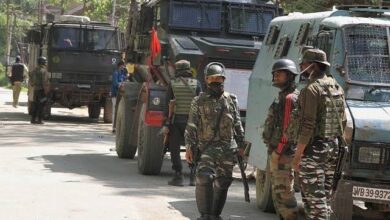Srinagar ranked at 49th, Jammu 27th in Union Govt’s ‘Ease of Living Index’

The winter capital city- Jammu has been ranked at 27th position while summer capital-Srinagar of the Union Territory of Jammu and Kashmir at 49th spot, in the Government’s ‘Ease of Living Index’ (EoLI) for the year 2020, Daily Excelsior reported.
While Bengaluru was adjudged the most liveable city among 111 cities in India with top ranking, in the Govt’s ‘Ease of Living Index’, followed by Pune, Ahmedabad, Chennai, Surat, Navi Mumbai, Coimbatore, Vadodara, Indore and Greater Mumbai in the list of top 10.
Of the total 49 cities ranked on livability index in the ‘million-plus population’ category, Delhi figured at the 13th spot with 57.56 score, Ludhiana at 14th spot, Jodhpur at 21st , Jaipur at 23rd, Chandigarh 29th, Agra 35th, Amritsar at 45th spot and Srinagar at the bottom, with a score of 42.95.
According to the index released by Union Housing and Urban Affairs Minister, Hardeep Singh Puri today, Shimla topped the category of cities with ‘population less than million’ while Jammu ranked at 27th position with 52.49 score. Previously, Jammu had remained at 95th spot while Srinagar at 100th place in the list of 111 cities.
Himachal’s capital city-Shimla, with a score of 60.90, remained at Ist spot in the list of 62 cities while Muzaffarpur was at the bottom with a score of just 45.53.
In this category of ‘less than million population’, Bhubaneswar was ranked second, Silvassa third and they were followed by Kakinada, Salem, Vellore, Gandhinagar, Gurgaon, Davangere and Tiruchirapalli in the list of top 10 cities.
While Ghaziabad and Meerut in UP, figured at the 30th and the 36th spot in the ‘million-plus population’ category respectively, Allahabad is at the 32nd position and is followed by Patna (33rd). Faridabad is ranked 40th in this category.
Performance of the cities have been measured on four broad parameters – governance and social, physical and economic infrastructure.
The ‘Ease of Living Index’ is an assessment tool that evaluates the quality of life and the impact of various initiatives for urban development.
A total of 32.2 lakh people residing across 111 cities participated in a ‘Citizen Perception Survey’ holding a weightage of 30 per cent.
“These cities have emerged as models of development who will inspire others to perform better. Further, their peers will also benefit from emulating their best practices,” Puri said.
In the 2018 ‘Ease of Living Index’, Pune was ranked the most liveable city in the country. Navi Mumbai and Greater Mumbai, which held the second and the third position in 2018, have slipped to the sixth and the 10th rank, respectively in the 2020 edition of the East of Living Index.
Tirupati was at the fourth position, while Chandigarh had been ranked fifth in 2018, but in the 2020 ‘Ease of Living Index’, Tirupati and Chandigarh have slipped to the 46th and the 29th position, respectively.
Indore topped the ‘Municipal Performance Index’, involving 51 Municipal Corporations in the million-plus population category, while Guwahati figured at the bottom.
In this category, Surat came second, followed by Bhopal, Pimpri Chinchawad, Pune, Ahmedabad, Raipur, Greater Mumbai, Visakhapatnam and Vadodara.
New Delhi Municipal Council topped the ‘Municipal Performance Index 2020’ in the ‘less than million’ population category. It is followed by Tirupati, Gandhinagar, Karnal, Salem, Tiruppur, Bilaspur, Udaipur, Jhansi and Tirunelveli. Shillong is at the bottom of this list featuring 60 Municipal Corporations.
The Union Housing and Urban Affairs Ministry said that the ‘Municipal Performance Index’ is an effort to assess and analyse the performance of Indian municipalities based on their defined set of functions.
He said the Central Government, under the leadership of Prime Minister Narendra Modi, has unleashed the most comprehensive effort to transform the urban landscape.
The ‘Municipal Performance Index’ will strengthen democracy and participatory governance by allowing citizens, civil society and other key stakeholders to gain a deeper understanding of the functioning of their local Government bodies, and hold the officials accountable, the Minister added.






